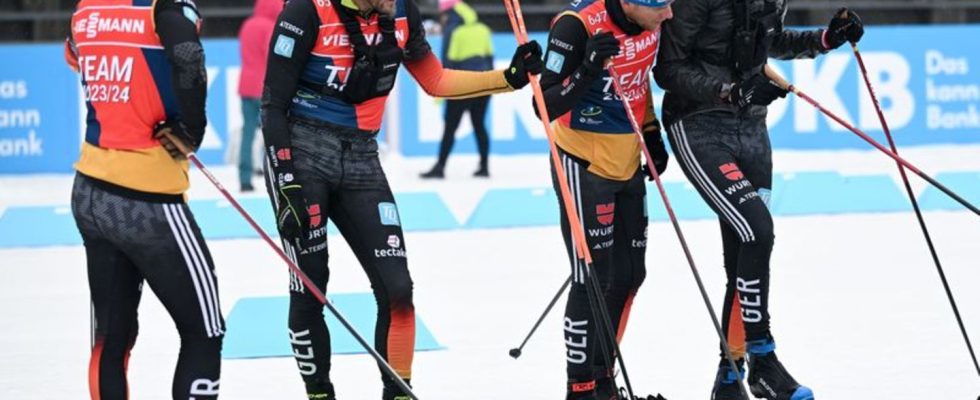World Cup at Holmenkollen
Difficult conditions in Oslo: Biathletes are looking for perfect skis
The biathletes’ skis will also be a big topic at the World Cup in Oslo. photo
© Hendrik Schmidt/dpa
Are German biathletes threatened with the next ski fiasco? It will be warm and wet again at the World Cup at Holmenkollen. The search for solutions continues.
Looking at the weather forecasts doesn’t bode well for the German biathlon team. Temperatures above freezing and a lot of rain are expected World Cup on Holmenkollen – the very conditions that caused unexpectedly big skiing problems at the World Cup.
“I hope that in Oslo there will be a bit of calm in the whole material issue that accompanied us throughout the World Cup,” said Janina Hettich-Walz. Whether the wish of the most successful German ski hunter with two World Cup medals will come true will probably be seen on Thursday (2.15 p.m./ZDF and Eurosport) in the women’s singles.
We will continue to examine why the preparation of the skis did not work as desired at the highlight of the season in Nove Mesto, Czech Republic. “The follow-up work after the World Cup is very extensive, at least as far as medium-term planning is concerned,” said sports director Felix Bitterling from the German Ski Association: “We will tackle the issue of material, especially in wet conditions, in a goal-oriented manner within the DSV.” Together with the cross-country skiing department, “we are working hard on solutions and improvements.”
Decades of experience are worthless
The first races after the World Championships, which were rather mixed with three medals and no titles, will show whether there have been short-term improvements. The focus is once again on the important work of the ski technicians, which has changed massively since this season. The world association IBU implemented an EU directive banning certain fluorine compounds. They are considered harmful to the environment and health, but they make the skis water and dirt repellent and therefore glide quickly and for longer.
Since the ban on fluorine wax, ski technicians can no longer fall back on decades of past experience. The databases filled with information about each World Cup location are worthless, everything has been set to zero. Other nations such as Sweden and Italy also had major problems at the World Cup. The Germans have to find the combination that is best for the respective conditions from around 200 wax mixtures and up to 70 so-called hand structures. In addition, there is the ski grind, which displaces the water the most.
Ski technicians worked up to 14 hours a day
“Every week it’s a dance on the razor’s edge and such a blade is narrow,” said Bitterling at the World Cup about the right selection. In Nove Mesto, the technicians were already working doggedly on solutions, sometimes in 14-hour shifts, and there are likely to be busy days again at Holmenkollen at the beginning of the last trimester of winter. After the individual races, there will be mass starts and mixed competitions in Norway until Sunday. Then we go to Soldier Hollow in the USA and Canmore in Canada. At the end of the season, the temperatures are currently significantly below zero and there will be more wintry conditions that have recently been clearly better for the Germans.
“We want to show that we are one of the absolute top nations in the last trimester too,” said Bitterling. It will be special for Benedikt Doll, who begins his short farewell tour in Oslo on Friday in the singles. The former world champion announced last week that he would end his career after the season at the age of 33. “My emotional state hasn’t changed after the announcement of my resignation, as the decision had been clear to me for a long time,” said the Black Forest Doll.

